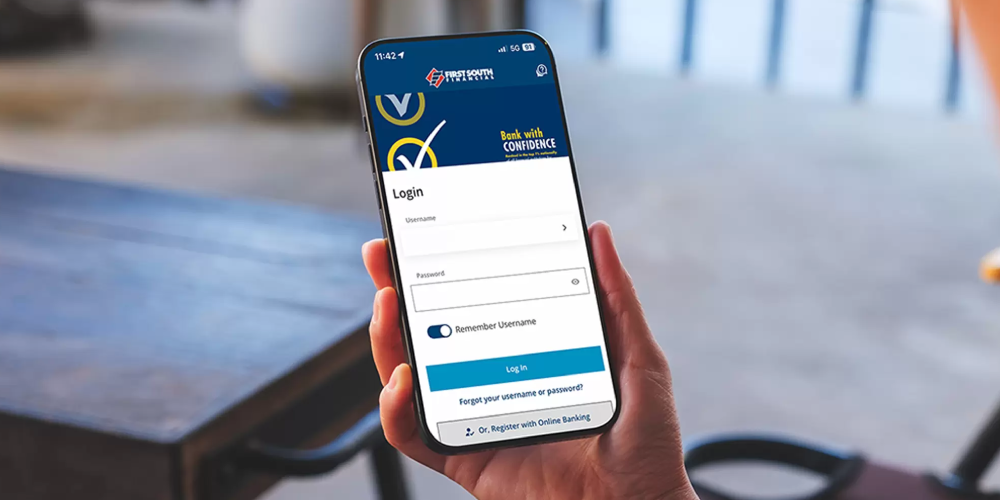Take Control with Our Financial Calculators

At First South Financial, we believe banking is about more than managing what you have—it’s about planning what you want. On our website, the Calculators & Tools section (via the Financial Resource Center) is a hidden gem that many members haven’t explored yet. It’s packed with simple-to-use calculators that help you estimate, compare, plan, and take action.
Access it here: Financial Calculators
These tools can help you:
- Project how much you’ll pay or save
- Compare different loan or savings options
- Visualize timelines and outcomes
- Make smarter decisions before you apply or commit
Let’s walk through some of the key calculators and how you (or your members) can get the most from them.
1. Auto Calculators
On this page, you’ll find tools like:
- Auto Loans: Find out how much automobile you can buy based on your monthly payment, or find out your loan payment based on your purchase price.
- Lease vs. Buy: A side-by-side comparison of the cost of leasing vs buying.
Why it matters:
Buying a car is one of the largest purchases many members make. These calculators help you determine what payment fits your budget (rather than picking a car and hoping you can afford it). They also help you evaluate whether leasing might be the better option based on cost, usage, and long?term plans.
Member tip:
- Before you walk into a dealership, log into our site and run the “Auto Loans” calculator:
- Enter a target monthly payment (what you feel comfortable paying).
- See how much of a car that payment would support.
- Alternatively, enter the car’s price to determine your monthly payment.
- Then run the “Lease vs Buy” calculator: compare the total cost of leasing vs buying over the same timeframe and see which scenario works better for you.
- With that info in hand, you’ll go into the conversation informed—and not pressured.
2. Credit Cards & Debt Management Calculators
Some of the most frequently overlooked tools relate to credit/debt:
- Credit Card Payoff: Use this calculator to see what it will take to pay off your credit card balance…and what you can change to meet your repayment goals.
- Personal Debt Consolidation: Should you consolidate your debt? This calculator is designed to help determine if debt consolidation is right for you.
Why it matters:
Many members carry balances, have multiple cards, or are juggling loans. These calculators give visibility into how long it will take to pay off debt, how much interest you’re paying, and how different payment amounts (or consolidation) can change your outcome.
Member tip:
- Pull up your credit card balances and interest rates. Use the “Credit Card Payoff” tool to:
- Enter current balance(s).
- Enter current interest rate(s).
- Play with making extra payments (or increasing monthly payments) and see how many months/years you could shave off the payoff timeline and how much interest you would save.
- Then consider the “Debt Consolidation” tool: run a scenario where you take one loan or card at a lower rate to combine balances—see whether the math supports consolidation (lower interest, fewer payments, faster payoff).
- This gives you a concrete action plan—and you can always bring your results in to us for a conversation about a debt-consolidation loan if that makes sense.
3. Savings, Investments & Retirement Calculators
Planning is a strength—and our calculators support that. Some of the tools here:
- Savings Calculator: Find out how consistent investments over several years can be an effective strategy to accumulate wealth.
- Savings Goals: What will it take to reach your savings goal? This financial calculator helps you find out.
- Retirement Income Calculator: Use this calculator to determine how much monthly income your retirement savings may provide you in your retirement.
- Investment Returns: Use this calculator to help you see how inflation, taxes, and your time horizon can impact your bottom line.
Why it matters:
What you save today can impact your lifestyle tomorrow. These tools help turn abstract goals into numbers—“I need to save X per month to have Y by age Z.” They also allow you to model different scenarios and assess when you might need to start or adjust.
Member tip:
- Set a savings goal now—maybe a down payment on a home, a vacation, or an educational fund. Use the “Savings Goals” calculator:
- Enter the total amount you want to save.
- Choose how many years/months until you want to hit the goal.
- The tool will tell you how much to save each month.
- Then use the “Savings Calculator” to see how much your savings could grow if you add extra when you can (bonuses, tax refund, etc.)
- For retirement, use the “Retirement Income Calculator”: enter your current retirement savings, how much you plan to save annually, estimate your retirement age, and see what kind of monthly income you might generate. If the number is lower than you expect, you’ll know you need to start earlier or save more.
4. Loan & Mortgage Calculators
We support both short-term loans and long-term commitments with tools such as:
Amortizing Loan Calculator: Either enter your desired payment and let us calculate your loan amount, or enter the loan amount and we will calculate your monthly payment.
Loan Comparison Calculator: Use this calculator to sort through the monthly payments, fees, and other costs associated with comparing loan options.
Mortgage Payoff: Save thousands of dollars in interest by increasing your monthly mortgage payment.
Refinance Breakeven: Use this calculator to see how much interest you can save if you refinance your mortgage.
Why it matters:
Whether a member is considering a new loan, comparing offers, or thinking of refinancing a mortgage, these calculators give clarity on the cost over time—not just the monthly payment. They help show how small changes (extra payments, shorter terms, rate differences) can lead to large savings.
Member tip:
- If you’re thinking of taking out a new loan (auto, personal, HELOC, etc.), start with the “Amortizing Loan Calculator”:
- Enter the payment you feel comfortable with and see how much you could borrow.
- Enter the loan amount and term, and check what the monthly payment you should be expecting.
- If you have multiple loan offers, use the “Loan Comparison Calculator” to input both offers (payment, term, fees) and compare which is financially smarter.
- For your mortgage: Plug into the “Refinance Breakeven” calculator: enter your remaining term, your current interest rate, the projected new rate, and the costs of refinancing. See how many months it will take before you break even—and whether the refinance makes sense given your plans.
- The “Mortgage Payoff” tool can show how even a slightly higher monthly payment accelerates payoff and reducesinterest. This is a powerful budgeting insight.
5. Personal Finance & Budgeting Calculator
On the tools page, you’ll find:
Home Budget Analyzer: Analyze your budget, see where your money goes, and find out where you can improve.
Why it matters:
Good budgeting isn’t glamorous, but it’s foundational. Before you save more or borrow more, you should know where your money is going. This tool helps visualize your income vs expenses and can uncover opportunities to redirect spending into savings or debt payoff.
Member tip:
- Take an hour or so: gather your last two months of expenses (bank statements, credit card statements, etc.). Then use the “Home Budget Analyzer”:
- Enter your income sources
- Enter recurring fixed expenses (housing, utilities, insurance)
- Enter variable or discretionary expenses (food, entertainment, subscriptions)
- See categories where you might be spending more than you realized
- Use that insight to set a “savings redirect” or “debt reduction” goal: e.g., if you see you spend $150/month on subscriptions you hardly use, you might choose to cancel or reduce those and redirect $100/month to a savings or debt payoff.
- Having that baseline budget gives you a launching point for using the other calculators (savings, loan payoff, etc.) with confidence.
Why It’s Worth Your Time
It’s free and always accessible: These calculators are available 24/7 on our site—no fee, no branch visit required.
It removes guesswork: Instead of “I think I can afford this loan”, you can see the numbers and decide confidently.
It helps you understand trade-offs: More terms = lower payment but more interest. Less term = higher payment but less interest. Use the calculator to see the trade-off.
It strengthens our partnership: When you come to us with real numbers (you’ve run a scenario, made a plan), our staff can help you fine-tune it rather than start from scratch.
It promotes proactive money-management: Using these tools helps you be in control—rather than reacting to what happens.
Call to Action
We encourage you to take 10–15 minutes this week to explore Calculators & Tools on our website. Choose one scenario that applies to you right now (loan, savings goal, debt payoff, budget) and run it. Then bring your results into conversation with us: whether you talk to a branch team member, give us a call, or send a secure message—our staff can help you turn your numbers into action.
Visit: Financial Calculators to start exploring.
« Return to "Blog"






